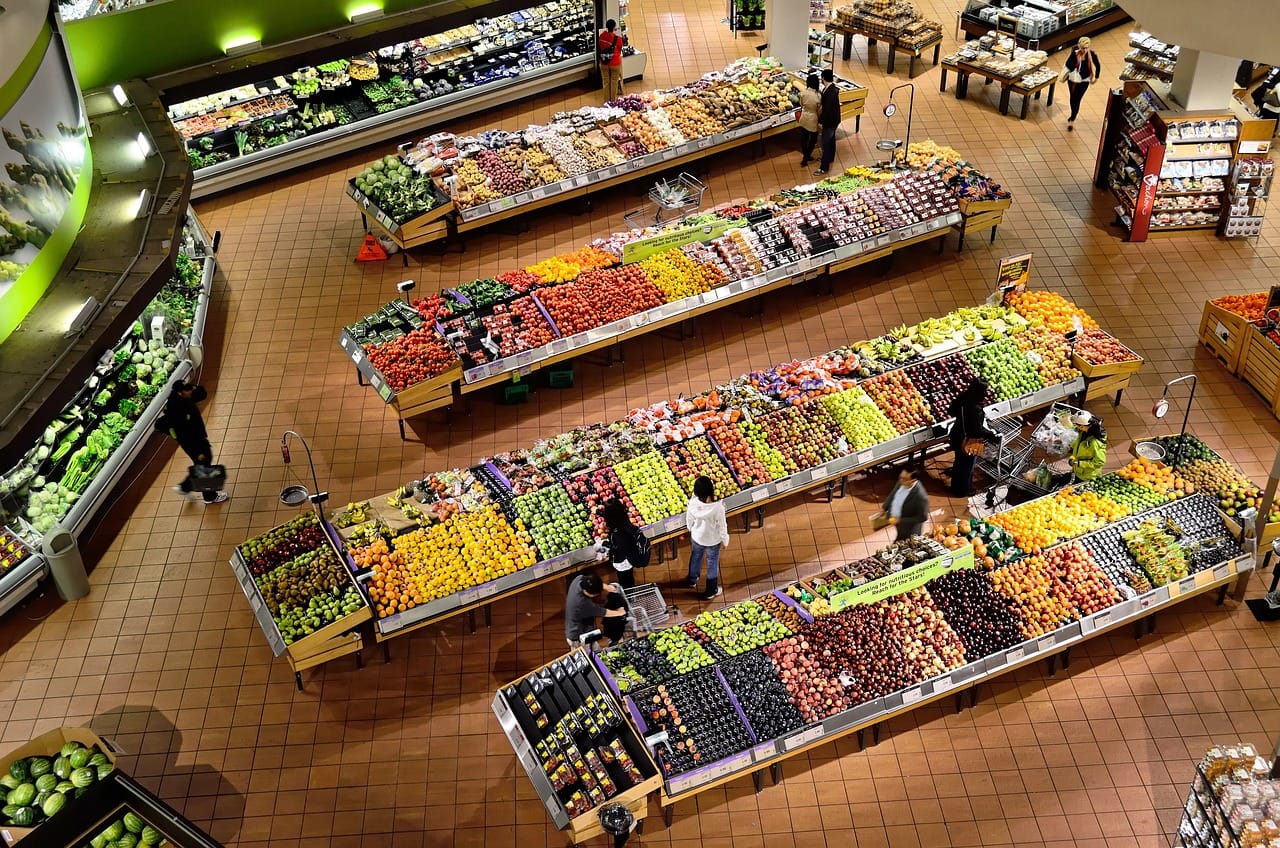The Durable Goods Dilemma | Exploring the Diverging Paths of Industrial Spending and Consumer Demand
Navigating the diverging paths of industrial spending and consumer demand in the durable goods market. Explore strategies, economic indicators, and case studies for businesses to thrive in this dynamic landscape

The durable goods market is a complex and dynamic landscape that encompasses both industrial and consumer sectors. Understanding the nuances of durable goods in these contexts is essential for businesses to navigate the challenges and opportunities presented by diverging paths of industrial spending and consumer demand.
Understanding Durable Goods in the Industrial and Consumer Context
Durable goods, also known as hard goods, are products with a long lifespan, typically lasting for three years or more. In the industrial context, durable goods refer to machinery, equipment, and other tangible assets used in production processes. These goods are essential for the operation and expansion of industrial enterprises, making industrial spending a key driver of durable goods demand.
On the other hand, in the consumer context, durable goods encompass a wide range of products, including appliances, electronics, furniture, and vehicles. Consumer demand for durable goods is influenced by various factors such as disposable income, consumer confidence, and lifestyle trends. Understanding the differences and interplay between industrial and consumer durable goods is crucial for businesses seeking to thrive in this dynamic market.

Durable goods play a significant role in driving economic growth and productivity. Industrial spending on durable goods is a leading indicator of business investment and economic expansion. Similarly, consumer demand for durable goods reflects consumer sentiment, purchasing power, and overall economic health. By understanding the impact of industrial spending on durable goods and the factors influencing consumer demand, businesses can make informed decisions to capitalize on market opportunities.
The Impact of Industrial Spending on Durable Goods
Industrial spending on durable goods is a critical component of the production and operational processes of businesses across various sectors. Investments in machinery, equipment, and technology are essential for enhancing productivity, efficiency, and competitiveness. The impact of industrial spending on durable goods extends beyond the immediate purchase of assets, influencing supply chains, job creation, and overall economic performance.
Moreover, industrial spending on durable goods serves as an important economic indicator, reflecting the confidence and outlook of businesses. When industrial sectors are investing in durable goods, it signals optimism about future demand, expansion, and innovation. Conversely, fluctuations in industrial spending can have far-reaching implications for durable goods manufacturers, suppliers, and related industries. Understanding the cyclical nature of industrial spending and its impact on durable goods is crucial for businesses to adapt and thrive in a constantly evolving market.
Factors Influencing Consumer Demand for Durable Goods
Consumer demand for durable goods is influenced by a myriad of factors, ranging from macroeconomic trends to individual preferences. Disposable income, consumer confidence, and interest rates are key determinants of consumer spending on durable goods. During periods of economic prosperity, consumers are more likely to invest in big-ticket items such as appliances, electronics, and vehicles. Conversely, during economic downturns or uncertainty, consumer demand for durable goods may wane as priorities shift towards essential expenses.
Furthermore, lifestyle trends, technological advancements, and environmental considerations also shape consumer demand for durable goods. The rise of sustainable and eco-friendly products has impacted consumer preferences, driving a shift towards durable goods that align with ethical and environmental values. Understanding these diverse and evolving factors is essential for businesses to anticipate and cater to consumer demand, enabling them to develop effective marketing strategies and product offerings.
Economic Indicators for Durable Goods Trends
Monitoring economic indicators is crucial for gaining insights into durable goods trends and market conditions. Key indicators such as new orders for durable goods, industrial production, and consumer sentiment surveys provide valuable data for assessing the health of the durable goods market. New orders for durable goods, in particular, serve as a leading indicator of future economic activity, reflecting businesses' investment intentions and demand for long-lasting products.

Additionally, industrial production trends offer insights into the overall output of durable goods, providing a gauge of manufacturing activity and capacity utilization. Consumer sentiment surveys, on the other hand, capture the attitudes and purchasing intentions of consumers, shedding light on their outlook for durable goods spending. By analyzing these economic indicators, businesses can gain a comprehensive understanding of durable goods trends, enabling them to make informed decisions and strategic plans.
Strategies for Businesses Navigating the Durable Goods Dilemma
Navigating the durable goods dilemma requires businesses to adopt strategic approaches that address the challenges and capitalize on the opportunities presented by diverging paths of industrial spending and consumer demand. Embracing innovation, diversifying product offerings, and leveraging data-driven insights are essential strategies for businesses seeking to thrive in the durable goods market.
Innovation plays a pivotal role in driving demand for durable goods, especially in the industrial sector. Businesses that invest in research and development, and technological advancements are better positioned to offer innovative and high-value durable goods that cater to evolving market needs. Similarly, diversifying product offerings to align with consumer preferences and market trends enables businesses to capture a broader share of the durable goods market, mitigating the impact of fluctuations in industrial spending.
Furthermore, leveraging data-driven insights and analytics empowers businesses to make informed decisions and optimize their durable goods strategies. By harnessing the power of data, businesses can identify emerging trends, forecast demand, and personalize their marketing efforts to resonate with industrial and consumer audiences. Embracing digital transformation and e-commerce also presents opportunities for businesses to expand their reach and accessibility in the durable goods market, catering to a diverse and global customer base.
Case Studies of Successful Durable Goods Marketing
Examining case studies of successful durable goods marketing provides valuable insights into effective strategies and best practices adopted by businesses. Companies that have effectively navigated the durable goods dilemma have demonstrated adaptability, customer-centric approaches, and proactive responses to market dynamics.
For instance, in the industrial sector, companies that have embraced digitalization and automation have reaped the benefits of enhanced efficiency and productivity. By offering advanced machinery and equipment that streamline production processes and reduce operational costs, these companies have positioned themselves as leaders in providing durable goods that drive industrial innovation and growth.
In the consumer sector, successful durable goods marketing often revolves around brand differentiation, customer experience, and sustainability. Companies that have prioritized brand storytelling, personalized experiences, and eco-friendly initiatives have resonated with consumers, fostering brand loyalty and market differentiation. By aligning durable goods offerings with consumer values and aspirations, these companies have carved out a distinct competitive advantage in the market.
Future Outlook for Durable Goods in the Industrial and Consumer Sectors
The future outlook for durable goods in the industrial and consumer sectors is shaped by technological advancements, changing consumer behaviors, and global economic dynamics. In the industrial sector, the integration of Industry 4.0 technologies, such as IoT, AI, and robotics, is expected to revolutionize the production and utilization of durable goods. The shift towards smart and interconnected manufacturing systems presents opportunities for businesses to offer innovative and efficient durable goods that drive industrial progress.
In the consumer sector, the rise of e-commerce, personalized experiences, and sustainable consumption is projected to influence the demand for durable goods. Companies that embrace digital transformation and omnichannel strategies are likely to thrive in a competitive consumer market, catering to diverse consumer segments and evolving preferences. Moreover, the emphasis on sustainable and ethical durable goods is expected to continue, shaping consumer choices and market trends.
Conclusion: Adapting to the Evolving Landscape of Durable Goods
In conclusion, the durable goods market presents a dynamic landscape with diverging paths of industrial spending and consumer demand. Businesses must understand the impact of industrial spending on durable goods, factors influencing consumer demand, economic indicators for durable goods trends, and strategies for navigating the durable goods dilemma. By embracing innovation, leveraging data-driven insights, and learning from successful case studies, businesses can adapt to the evolving landscape of durable goods and capitalize on emerging opportunities.
As the durable goods market continues to evolve, businesses that prioritize adaptability, customer-centric approaches, and sustainability are poised to thrive in the industrial and consumer sectors. By staying attuned to market dynamics and embracing strategic initiatives, businesses can navigate the durable goods dilemma and position themselves for success in a competitive and ever-changing market.
Thank you for reading! If you found this article insightful, feel free to explore our other business and economic insights. Stay tuned for more valuable content!




